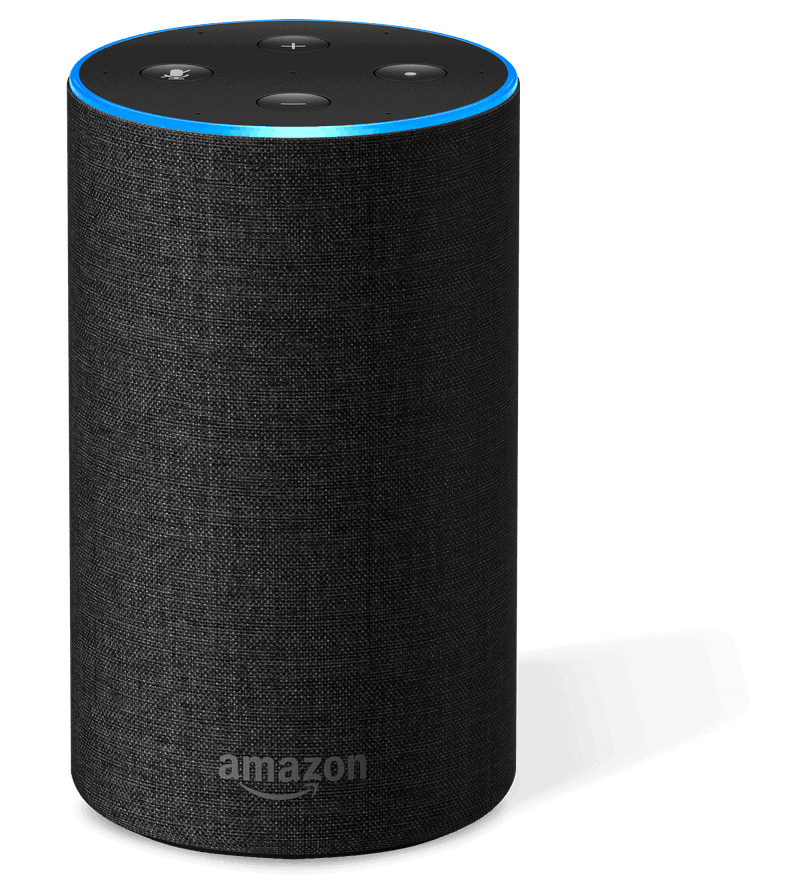Amazon
Alexa
Skill
Learning about the system of conversations by designing
Design for conver-sations
Amazon approached us in 2017 with the opportunity to integrate full Alexa support into our Fire App for the upcoming Fire TV device. Amazons request created an excellent chance for us to leave our comfort zone and step into new areas. Magine’s marketing team saw significant potential in, us providing a skill for this new platform and became a primary driver. Meanwhile, the release of the new Fire TV was still a couple of months away, and we used the time until then to learn more about Alexa.
Then, in the end, Humans and voice assistances might not be so different, then we both sometimes misunderstand each other. Knowing this meant we had to design for conversations.
Understand, brainstorm and define
Voice UI was new territory for us we didn’t know what was possible, which limitations exist, and how to build an Alexa skill. To understand what is possible, we started to become users of Alexa skills. We looked into the Alexa skill store and tried out everything that looked interesting to us. We discovered how slightly different formulations cause different results. Therefore, how essential it is to have multiple variations of the same phrases, then people speak differently. We also learned what a conversation model is and how we use its structure.
Having a better understanding of what an Alexa skill is, we began to bring everyone’s ideas to the table. On the one hand, we used the knowledge of our marketing, business development, content, product and design teams. On the other hand, we used what we knew about our users from customer support and research to define a first version of the Magine skill.
We decided that the first version of our Magine skill should be a TV guide.
Alexa Skill Store
TV Skill Brainstorming
Alexa VUI
Conversation
Model
Ideate and Plan
One of the things we learned was, that if the utterance and slot value variance aren’t high enough, users will encounter dead ends. And that is what we wanted to prevent in the skill we were going to build. In short, we had to speak their language.
To understand what level of variance is needed, we step by step mapped out the different contexts. Those contexts could be asking for channels and time, content or more information about shows. Besides the context, we also identified certain variables for the slot values based on the core areas time, material, metadata and channel.
Combining the context and the variables we visualized the flow a conversation could take and when to use which form. Drawing the flow helped us later to communicate better what we had in mind when we partnered up with the agency sensory-minds. They helped us finishing the conceptual phase and developing the skill for Magine.
Slot value mapping
Context Mapping
Magine
Alexa Skill
conversation draft
Build and Test
With the experts at Sensory-minds developing our skill, my job switched from concept/design in early phases to managing the product in the later stages. It changed the focus towards providing the developers from Sensory Minds with everything they needed, for example, access to our API, coordination of timelines and importing updated data.
Meanwhile, our quality assurance team and marketing team had started with testing the first iterations of the Magine Alexa skill. The one thing, in particular, that was quite challenging was that user pronounces names of channels and shows differently.
Keeping that in mind, we knew that even with the core ready, we still had a lot of work to do in future iterations.
Alexa test Devices
Skill Test Phrases
Starting to get to know each other
“Alexa, ask Magine when are the Simpsons running today?”
“The Simpsons is running at 6 pm.”
“Please set a reminder for The Simpsons today.”
“I have set a reminder at 6 pm today for The Simpsons.”
